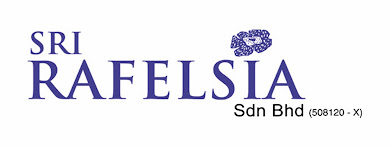Dyspraxia is also known as DCD - Developmental Co-ordination Disorder, Clumsy Child Syndrome, Perceptuo-motor Dysfunction, Motor Learning Difficulty and Minimal Brain Dysfunction. This very fancy set of terminology is used to refer to a cluster of difficulties associated with the planning, sequencing, organisation and execution of motor functions.
A recent study by Margaret Portwood, a senior educational psychologist in the UK found that up to 60% of juveniles tested at a junior offenders institution, were dyspraxic! The exact causes for dyspraxia have not been isolated but research suggests that it has to do with immaturity of neuron development within the brain. The inefficient transmission of information between the left and right hemispheres seem to interfere with motor related processing.
Early signs and symptoms of dyspraxia include clumsiness, constant falling down or tripping, temper tantrums, delay in achieving milestones such as learning to walk, roll over, talk, difficulty learning simple concepts such as "on" or "under" etc.
Some later signs and symptoms include ineffective self expression, difficulty with forming friendships, avoids PE and games, has difficulty within classroom but does better with one to one sessions, difficulties in copying, learning mathematical concepts, difficulties learning to write essays, unable to remember or follow instructions and generally has poor organisational skills.
Ad Code
Total Pageviews
Translate
Search This Blog
Categories
- #ADD (6)
- #Discipline (2)
- #Dyslexia #SlowLearner #Literacy #Assessment (3)
- #Dyspraxia (2)
- #EducationalAssessments (4)
- #Mental Health (5)
- #Motivation (3)
- #Positive Parenting (6)
- #Self-Esteem (2)
- #SpecificLanguageDisorders (2)
- #assessments (1)
- #assessments #reading #dyslexia #dyscalculia (4)
- #autism (4)
- #awareness #advocacy #mental health (1)
- #behavior management (1)
- #devlangdis (8)
- #dyscalculia (1)
- #dyslexia (6)
- #growth mindset (1)
- #homeschool (4)
- #homeschooling (1)
- #homework (2)
- #parenting (9)
- #reading #dyslexia (1)
- #specialeducation (7)
- #theScienceOfReading (1)
- ADD (7)
- ADHD (3)
- ASD (2)
- Coaching (1)
- EIP (4)
- Educational Assessments (2)
- aspergers (1)
- assessments (4)
- behaviour management (1)
- dysgraphia (2)
- dyslexia centre malaysia (3)
- dyslexia test (4)
- dyslexia testing (1)
- homeschool (3)
LINKS
Contact Form
HTML
Follow
DYSPRAXIA
Rosh Vettiveloo
July 31, 2010

Posted by Rosh Vettiveloo
I am a Psychologist (Cognitive) cum Special Educational Needs Consultant in Kuala Lumpur. I work with learners aged 7 onwards on a 1-1 basis both online and face to face. I also provide assessments for exam access arrangements for IGCSE, IB, NESA and diagnosis testing for Learning Difficulties. I am registered with both, the British Psychological Society and Persatuan Psikologi Malaysia.You may like these posts
Popular Posts
Phonics Instruction
July 29, 2010
Another nice little site: Forging partnerships
October 13, 2009
DYSPRAXIA
July 31, 2010
Featured post
Failure, a part of growth
Rosh Vettiveloo-
February 06, 2023
Footer Menu Widget
Created By Blogspot Theme | Distributed By Gooyaabi Templates




0 Comments